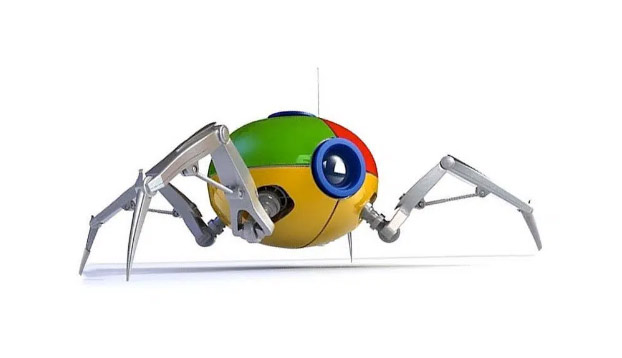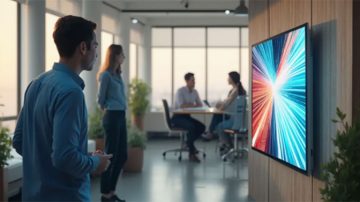Internal connections, in my opinion, and of many others, possess so much power.
Internal links on your website can lead to additional information that a user might find helpful and therefore boost the length of time visitors are willing to spend on your site. This extra time spent on your site is appealing to Google.
A good internal link structure assists search engines (their crawlers) in finding and indexing posts, passing on link juice, and eventually boosting your content’s ranking. Internal link anchor texts also provide additional information about the linked post’s content.
MISTAKE NUMBER ONE – MAKING INTERNAL LINKS NO FOLLOW
Dofollow links should be used on your website’s internal links instead of the opposite, as you can probably guess, no follow.
While it’s not of great concern if some of your internal links are unintentionally set to no follow, it’s best practice to have them set to do follow as this is beneficial to you.
Nofollow links
Nofollow links inform search engines that just because you link to a post doesn’t mean it’s important. Only use a nofollow link if you want Google to:
“not associate your site with, or crawl the linked page from, your site,”
according to Google’s rules.
It doesn’t make sense to make your own internal links no follow if you follow their suggestion.
However, there are times when you may want to create internal links that are set to no follow:
- User-generated content: no follow users are not permitted to add related links.
- Creating a link to a legal page: The value should be set to no index.
- Linking to pages that aren’t indexed, such as login pages and other non-indexed pages
Internal links that are do follow allow search engines to freely navigate your website. Using no follow internal links on a regular basis will cause more harm than good.
Even if you make this “error,” search engines will almost always be able to correct it. However, it is preferable to keep things simple and clean for them!
MISTAKE TWO – LINKING TO DIFFERENT PAGES WITH THE SAME ANCHOR TEXT
Avoid using the same anchor text to link to numerous separate pages or posts. In some niches and on huge sites, this can be difficult to prevent, but it’s critical.
I could, for example, use the anchor text “SEO Belfast” to link to a number of pieces on SEO. However, if I use the same anchor to link to multiple pages, it sends out a confusing signal to search engines.
Which of the following posts is actually about SEO? Which URL, at the very least, do I want to rank for that term?
Rather than connecting to several URLs with that precise anchor, I prefer to have a single post that I link to constantly with the keyword ‘SEO Belfast (and variations). I use distinct alternative anchors that won’t clash to link to related posts.
Even if you make this “error,” search engines will almost always be able to correct it. However, it is preferable to keep things simple and clean for them!
MISTAKE THREE – INCLUDING INTERNAL LINKS IN HEADER TAGS
Internal (or external) links should not be used on header tags within your content. Post headers themselves (H1, H2, H3, etc.) are crucial for SEO. They assist search engines with determining the content’s primary focus. This process is harmed by linking out from H1-H3 headers.
Headers in your article should include keywords that you want that post to rank for, not a link to another page. Internal links in headers can also be harder to notice because it’s a less common practice.
Internal links are appropriate in the following header tags on your site:
- On your website or blog’s main page
- Widgets for navigation
- At the bottom of your website
MISTAKE FOUR – NOT MONITORING AND FIXING BROKEN LINKS
Nobody wants broken links on their website, therefore it’s a good idea to fix them on a regular basis. You don’t want to spend a lot of time doing it though.
You are free to do this manually, but that does take precious time away from you, ensuring that there are no broken links anywhere manually can mean that you miss some. We use the Website auditor or SEMrush, where we can easily see where the 404 problems or broken links (among other things) are. Open the reports once a week (or once a month) to determine if any errors demand your attention. and make it a priority to fix them as they can affect your site.
It is when you change the URL structure or delete a post that internal links are most likely to break — we’ll go through that next.
MISTAKE FIVE – FORGETTING TO ADD REDIRECTS
Make sure you add a redirect when you alter a post’s URL or delete it.
You’ll want to redirect the old URL to the new URL if you alter the URL of a post or page. This informs Google of the new post’s location and ensures that any links pointing to the old URL are correctly redirected.
If you have internal links pointing to a post that has been relocated or removed, you should update them to the new URL.
Make the redirect to a similar post or your homepage if you’ve deleted a post. After that, you’ll need to remove any internal links that pointed to the deleted post.
MISTAKE SIX – MAKING ANCHOR TEXT TOO SHORT OR TOO LONG
Internal link anchor text might be either too long or too short.
Internal links are fantastic because you can control the anchor, as I explained earlier. You don’t usually squander opportunities by linking on words like:
Or another similar brief, non-descriptive anchor.
At the very least, use a few keyword-rich terms to help search engines understand what the content is about. This also adds weight to the link.
Another issue with short link anchors is that, depending on the colour of your links, they can be difficult to see. They aren’t as noticeable.
Don’t, on the other hand, link out from a long sentence or anything like that – it defeats the purpose.
The usual rule for anchor text length for both internal and external links is 6–8 words maximum, however, in most circumstances, 2–4 words are enough.
MISTAKE SEVEN – WRITING AWKWARDLY IN ORDER TO HAVE THE “PERFECT” KEYWORD ANCHOR
There’s no need to compose a sentence only to get the “ideal” exact match keyword you’re looking for. – it can appear awkward.
Write the sentence so that it flows organically, and either omit the internal link or make do with what you have.
When writing, a good rule of thumb is to always think of your audience first and search engines second. Usually, there’s a method of phrasing things that achieves both objectives! We offer a content and social media management writing package if you aren’t savvy in writing yourself.
MISTAKE EIGHT – DIRECTING TO HOMEPAGE TOO MUCH INSTEAD OF CONTENT
If you look at your site’s backlinks, you will most likely see a lot of your links are linking to your homepage.
Too many homepage links are bad for SEO, it is known as over optimisation and should be avoided at all costs.
Have the majority of your external links pointing to content rich pages as the homepage doesn’t usually have useful information that a user will be searching for.
If you create a strong internal linking structure, you can boost the link juice earning potential of your internal pages and have them start to rank better by creating a clear click path and indexation on the site.
GETTING THE MOST OUT OF INTERNAL LINKS
Internal links can aid in the growth of a website.
They transfer authority from one page to the next, provide structure to your site, and encourage users to stay longer. It’s an important aspect of website development to get right and something that our web design team specialise in here at Gekkoshot.
Old content that is on your site can also be used for new links when updating it. This is a very powerful combination of SEO tactics. Showing google there are new links, the crawler heads back and indexes it again and may even increase its ranking in the SERPs.
Linking is a crucial part of everyday life at Gekkoshot, whether that is internal, external or link building. The foundations of great web design start with the correct linking, ensuring that the website has the best chance at being understood by Google and ranking for the keywords it wants to rank for.
About the author:
We are also experts in getting targeted traffic to your site, so not only does your website look and function great, but with our SEO plans you will have a steady supply of potential customers finding your site via organic search. We pride ourselves on ‘outcaring’ the competition by building meaningful connections with your audience through SEO. This way you’ll get the best ROI. We believe that behind every search is a person, and we make your site the number 1 choice so these people find your website as their solution. It’s not just marketing for us, it’s personal.





